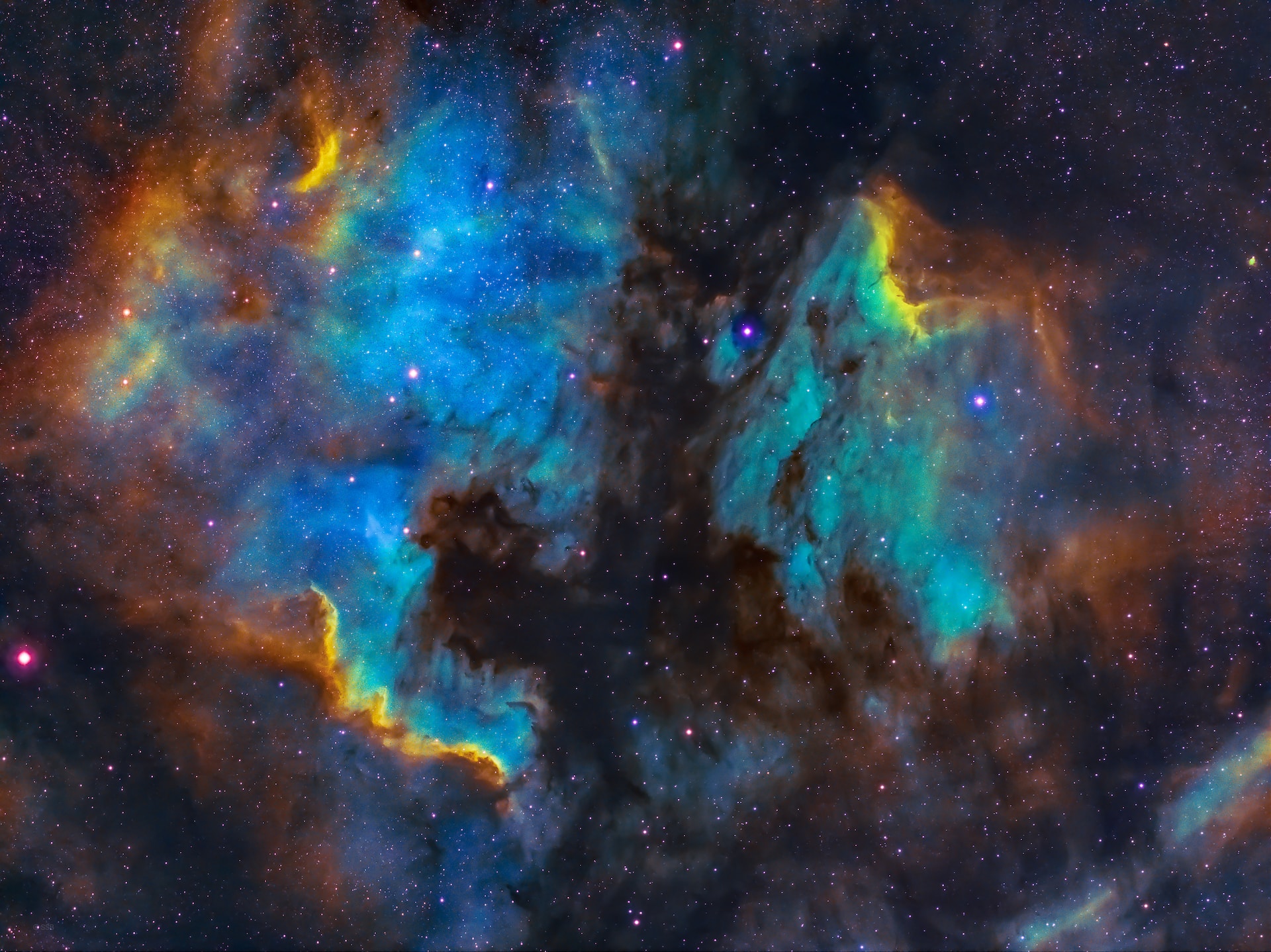What if there are galaxies that we cannot see with our eyes or telescopes? These are called dark galaxies, and they may hold the key to some of the biggest mysteries of the cosmos.
What are dark galaxies?
Dark galaxies are galaxies with no (or very few) stars. They are made of mostly dark matter, hydrogen, and dust. Dark matter is a mysterious substance that does not emit or reflect any light, but has a strong gravitational pull. Scientists think that dark matter makes up most of the mass in the Universe, but they do not know what it is made of or how it behaves.
Dark galaxies are very hard to detect because they have no visible stars. Astronomers have to use other methods, such as radio waves, quasar spectra, or gravitational lensing, to look for them. So far, there are no confirmed examples of dark galaxies, but there are some candidates, such as HI1225+01, AGC229385, and Dragonfly 44.
Why are dark galaxies important?
Dark galaxies are important for several reasons. They may help us understand:
- The nature of dark matter. Dark galaxies may reveal how dark matter interacts with normal matter and itself. They may also tell us what dark matter is made of and how it was formed.
- The formation and evolution of galaxies. Dark galaxies may show us how some galaxies ended up with so many stars, while others remained dark. They may also show us how the interactions between dark matter, gas, and stars shaped the structure and dynamics of galaxies.
- The dwarf galaxy problem. This is a discrepancy between the number of small galaxies that we see around larger galaxies and the number that we expect from simulations. Dark galaxies may be part of the missing population of small galaxies.
How do we detect dark galaxies?
There are three main methods that astronomers use to look for dark galaxies:
- Radio waves. Dark galaxies may emit radio waves from atomic hydrogen in their gas. Radio telescopes, such as Arecibo or the Parkes Telescope, can pick up these signals and match them to optical surveys to identify any sources with no stars.
- Quasar spectra. Quasars are very bright and distant objects that emit a lot of light. When this light passes through a dark galaxy, it may be absorbed by the hydrogen gas, leaving a signature in the spectrum. Astronomers can use this technique to find intergalactic clouds of hydrogen, some of which may be dark galaxies.
- Gravitational lensing. This is the bending of light by massive objects, such as dark galaxies. This can magnify and distort the images of distant sources, revealing faint structures that would otherwise be invisible. The Hubble Space Telescope has used this technique to discover several ultra-diffuse galaxies (UDGs), which are very faint galaxies that may be related to dark galaxies.
What are the challenges and prospects of studying dark galaxies?
Studying dark galaxies is challenging for several reasons. Some of the challenges are:
- Identification and confirmation. How do we know that a candidate dark galaxy is not a tidal gas cloud, a foreground star, or a background galaxy? How do we verify that a dark galaxy contains dark matter and not just gas? These questions require high-resolution observations and careful analysis, which are not always available or feasible.
- Interpretation and understanding. What do dark galaxies tell us about the nature of dark matter and the history of galaxy formation? How do we compare and contrast dark galaxies with other types of galaxies? How do we incorporate dark galaxies into our models and simulations of the Universe? These questions require theoretical and computational work, which is not always straightforward or conclusive.
Despite these challenges, the study of dark galaxies is a promising and exciting field of research. With the advent of new and improved telescopes and instruments, such as the Square Kilometre Array (SKA), the James Webb Space Telescope (JWST), and the Large Synoptic Survey Telescope (LSST), we may be able to detect and characterize more dark galaxies shortly. These discoveries may shed new light on the mysteries of dark matter and the origin of galaxies, and may even reveal new phenomena that we have not yet imagined.
Conclusion
Dark galaxies are one of the most fascinating and elusive objects in the Universe. They are galaxies with no (or very few) stars but with significant amounts of gas and dark matter. They may help us understand the nature of dark matter and the formation and evolution of galaxies. They are hard to detect and study, but new technologies and methods may enable us to find and explore more of them in the coming years. Dark galaxies are a reminder that there is much more to the Universe than meets the eye and that we still have a lot to learn about the cosmos.
Check out more articles!








